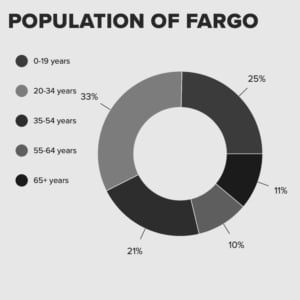Fargo Real Estate Update: What You Should Know in 2025
🔽 Table of Contents
Fargo Real Estate Overview
 Fargo, North Dakota is a fast-growing Midwestern city with a resilient housing market. Its strong economy, low unemployment, and high quality of life continue to attract new residents, especially remote workers and young professionals. Whether you’re looking to purchase your first home, relocate to a quieter region, or invest in a rental property, the Fargo-Moorhead real estate market offers a range of opportunities in 2025.
Fargo, North Dakota is a fast-growing Midwestern city with a resilient housing market. Its strong economy, low unemployment, and high quality of life continue to attract new residents, especially remote workers and young professionals. Whether you’re looking to purchase your first home, relocate to a quieter region, or invest in a rental property, the Fargo-Moorhead real estate market offers a range of opportunities in 2025.
With a median home price hovering around $231,200, Fargo remains more affordable than many U.S. cities while still offering modern amenities, good schools, and a vibrant downtown. Local agents report strong buyer demand and limited inventory, which means well-priced homes often receive multiple offers within the first few weeks of listing. If you’re searching for Fargo real estate listings or new construction homes in Fargo, 2025 presents both challenges and rewards depending on your buying strategy.
Factors Influencing Home Prices
1. Economic Prosperity
Fargo’s diverse economy includes healthcare, education, technology, and manufacturing. Job stability and rising incomes contribute to steady demand for homes.
2. Population Growth
New residents continue to move to Fargo for jobs, lower costs, and a higher quality of life. The demand for housing is growing faster than supply.
3. Low Inventory
Home construction is active but hasn’t caught up to demand. Limited inventory has resulted in increased competition and higher prices.
4. Mortgage Rates
After a spike in 2023–24, interest rates are settling. Rates in the 6% range are luring buyers back into the market.
Real Estate Market Trends
As of mid-2025, the average days on market for Fargo homes is around 43 days, down from earlier in the year. Twin homes and renovated properties often sell in under 2 weeks. Sellers are encouraged to price competitively, stage homes, and work with local experts for the best outcome. Fargo real estate trends show continued interest in affordable starter homes, multi-generational housing options, and homes with office/flex space for hybrid work.
Popular Fargo Neighborhoods
- Downtown Fargo: Walkable, historic, and close to restaurants and shops.
- Northport: Affordable, established community with great parks.
- Woodhaven: Modern homes, schools, and quiet streets.
- Moorhead: Just across the river, offers small-town feel with access to Fargo amenities.
Investing in Fargo Real Estate
Rental demand remains strong in 2025, and investors are targeting duplexes, townhomes, and smaller multi-unit buildings. With a rental vacancy rate under 5%, passive income potential is solid—especially near NDSU or downtown. The Fargo investment property market also benefits from a consistent influx of renters, particularly students, healthcare workers, and professionals relocating to the area.
Development and Job Growth
Fargo is expanding west and south, with several new developments like Timber Creek, Rocking Horse Farm, and Prairie Farms offering new construction opportunities. Commercial development is also growing—medical, tech, and logistics sectors continue to bring new jobs, reinforcing demand for housing. This balance between residential and commercial development makes Fargo a stable and future-focused real estate market in North Dakota.
Population Trends
 Fargo’s population is approximately 118,099 in 2025 with a median age of 30.3. The city has a homeowner vacancy rate of 0.9% and rental vacancy rate of 4.9% across more than 56,000 housing units. The largest population segment is 20–34 years old, indicating a strong base of first-time buyers and renters. This demographic mix helps fuel both sales and rental market demand.
Fargo’s population is approximately 118,099 in 2025 with a median age of 30.3. The city has a homeowner vacancy rate of 0.9% and rental vacancy rate of 4.9% across more than 56,000 housing units. The largest population segment is 20–34 years old, indicating a strong base of first-time buyers and renters. This demographic mix helps fuel both sales and rental market demand.
Fargo Real Estate FAQ: Fargo–Moorhead–West Fargo (Cass & Clay Counties)
Do I need flood insurance for homes near the Red River in Fargo–Moorhead, and how do I check FEMA flood maps?
Many river-adjacent properties fall within FEMA-mapped floodplains. Before you write an offer, check the FEMA Map Service Center by address to confirm the zone and base flood elevation. Lenders may require flood insurance in higher-risk zones; premiums and elevation certificates affect the “all-in” monthly payment.
How do property taxes work in Fargo and West Fargo (Cass County, ND), and how can I estimate annual taxes before I buy?
Taxes are based on assessed value and local mill levies. Review the parcel’s prior bills online, then model taxes alongside principal/interest, insurance, and any HOA dues. New construction or reassessment can change future bills—ask your lender/title team for estimates.
Are there first-time home buyer programs in Fargo, ND—down payment assistance and low-rate mortgages?
Yes. ND Housing Finance Agency (NDHFA) offers affordable loans plus down payment & closing-cost assistance (DCA) for eligible buyers. Get pre-qualified early—income, credit, price caps, and occupancy rules apply.
Can I use a USDA Rural Development loan near Fargo, and which Cass County areas are eligible?
USDA loans apply to designated rural areas; most addresses inside Fargo/West Fargo are ineligible, but many outskirts may qualify. Always verify on the USDA eligibility map by address.
In 2025 do Fargo home buyers have to sign a buyer-agent agreement, and who pays the buyer’s agent commission?
Yes—buyers sign a written representation agreement with compensation terms. Payment is negotiable and often handled via closing costs or seller concessions; your agent will structure a compliant offer.
What are typical closing costs in North Dakota for buyers and sellers in Cass County, and can they be negotiated?
Buyers commonly see ~2–3% for lender/title/escrow/prepaids; sellers often ~2–3% for title/transfer-related items. Credits and builder incentives can offset costs—compare a price cut vs. a rate buydown to see which best fits your monthly goal.
How does Fargo’s winter climate affect home inspections, appraisals, and maintenance planning?
Snow and cold can limit roof/yard visibility and extend timelines. Plan for HVAC performance checks, attic insulation/venting (ice-dam risk), and radon testing; allow re-inspection once snow melts if needed.
How do I confirm school boundaries for Fargo and West Fargo before buying a house?
Use the official boundary maps for Fargo and West Fargo school districts to verify attendance areas by address—lines can change. For live listings near your target schools, browse fargohomesearch.com.
Is Fargo a good place to buy a home?
Yes—Fargo offers affordable homes, steady job growth, and a high quality of life. For first-time buyers and move-up buyers, the Fargo real estate market combines relatively low commute times with strong amenities.
What types of homes are most common in Fargo?
Single-family homes, twin homes, and townhouses dominate listings, with robust new construction in West Fargo (58078) and South Fargo. Buyers also find condos and patio homes for low-maintenance living.
Are there good schools in the area?
Yes—Fargo and Moorhead public schools are consistently well rated, and the metro includes respected private and charter options. Always confirm attendance boundaries for your specific address.
Is now a good time to invest in Fargo real estate?
With low vacancy and steady rental demand, Fargo investment properties can offer solid long-term yields. Run true “all-in” numbers (taxes, insurance, utilities, HOA) and check city rental rules.
How does Fargo real estate compare to other Midwest cities?
Compared to Minneapolis, Sioux Falls, or Bismarck, Fargo typically has a lower cost of entry and competitive rental yields—appealing for investors seeking steady appreciation in a well-managed market.
What should I expect in a Fargo home search?
Expect relatively fast-moving listings and limited inventory in popular neighborhoods. Get fully underwritten and work with a local REALTOR® who knows Fargo–Moorhead–West Fargo pricing and comps.
What tech companies are in Fargo?
Fargo’s tech ecosystem includes Microsoft, Bushel, and growing ag-tech firms. North Dakota State University and incubators like Emerging Prairie support a strong startup culture.
How is the medical care in Fargo?
Excellent. Fargo is served by Sanford Health, Essentia Health, and the Fargo VA Health Care System—major employers that also draw healthcare professionals to the region.
🔗 View Active Listings | City Info | Transportation | Senior Living



